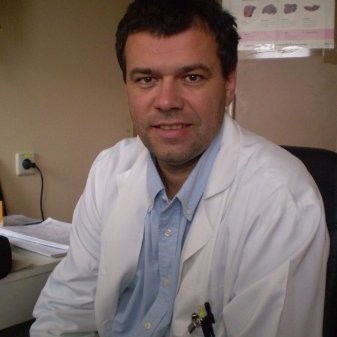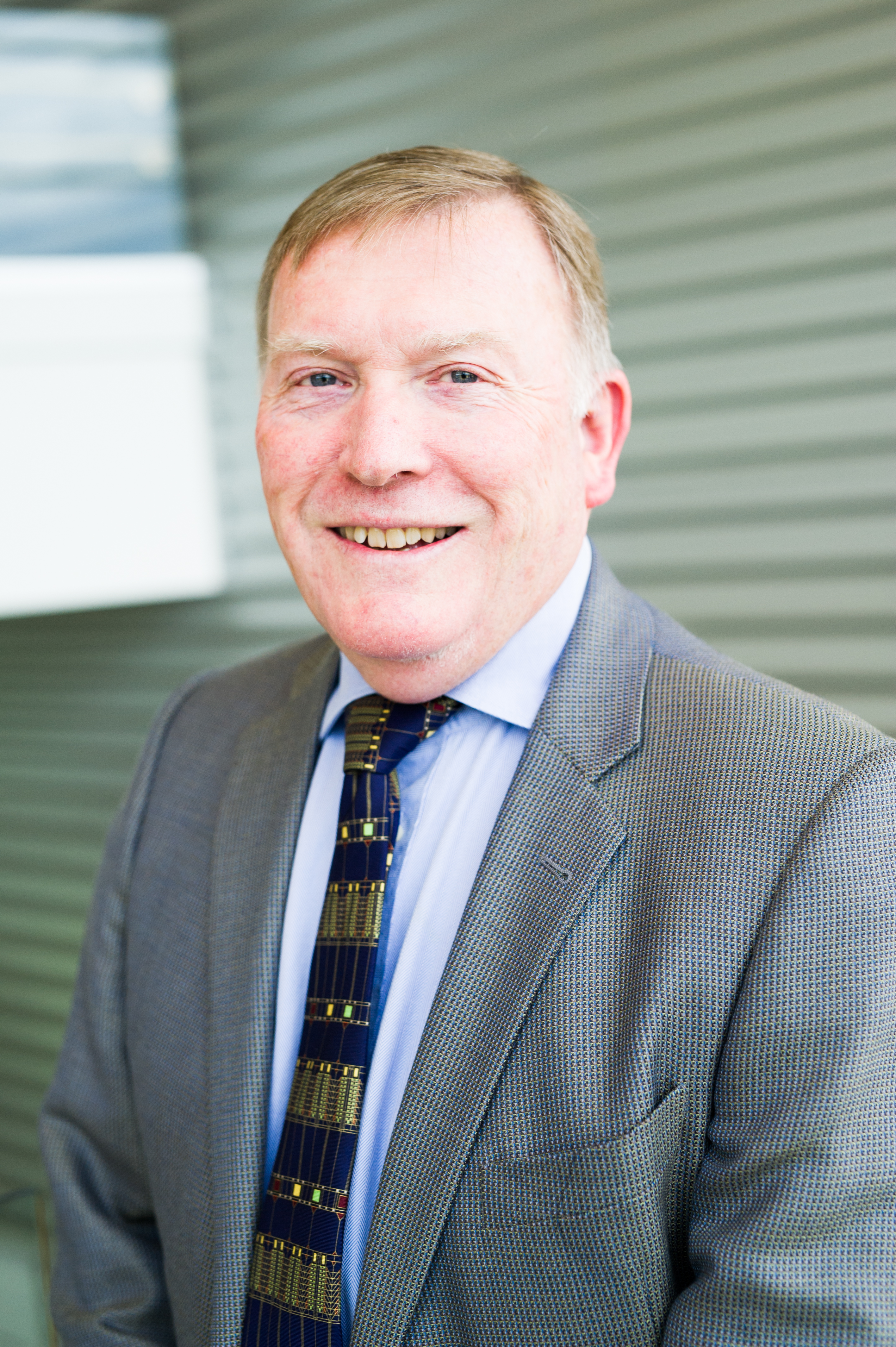Theme: Together Towards Tomorrow To Cure Addiction Related Disease & Mental Illness
Dual-Diagnosis 2018




*ACCEPTED ABSTRACTS*
Efficacy of Injectable Extended-Release Naltrexone for Severe and Chronic Relapsing Alcohol Use Disorders
Scott McNairy, University of Minnesota, USA
Gambling Disorder: Assessment and Treatment
Flicky Gildenhuys, Ixande – inpatient treatment Cape Town South Africa, South Africa
EDAS (Elite De-Addiction Services) - the first global 'home based' or 'direct' addiction treatment service
David Stanton, Tatva Center, India
Opioid detoxification without stress – Mission NOT impossible
Robertas Badaras, Vilnius University , Lithuania
Psychological factor Affecting the Addiction Relapse in Methadone-Treated Addicts Referring to Addiction Treatment Centers in Southeast of Iran: considering the demographic variables and addiction behaviors as confounders
Hossein Ansari, Zahedan University of Medical Sciences, Iran
TATVA: an international emotional wellbeing and recovery practice
Kripi Malviya, Tatva Center, India
Buprenorphine/Naloxone Treatment Outcomes – A 12 Year Experience at the Minneapolis VAHCS
Scott McNairy, University of Minnesota, USA
The Effectiveness of cognitive behavior therapy on loneliness, life satisfaction and depression of girls' veterans
Mina Zarnaghash, Lorestan University, Iran
Translating research to practice: The role of evaluation for policy formulation, clinical applicability and intelligent – led prevention strategies and early detection and treatment specificity
Fivos E. Papamalis, The University of Sheffield , Greece
The prevalence of hypothyroidism in methamphetamine abuser patient
Mahsa Houshdar, Hooshdar Medical Technology Company, Iran
Harm reduction services at Festivals/events - providing welfare areas at international events offering psycho-education and psychological support to attendees and artists in Asia
Kripi Malviya & David Stanton, Tatva Center, India
Anxieties of service users’ in the use of mobile phone applications (app) to assist with treatment adherence in dual diagnosis: A focus group Study
May Baker, Liverpool John Moores University (LJMU), UK
The Clinical Utility of Dimensional Based Conceptualisations for disentangling and treating comorbid disorders
Fivos E. Papamalis, The University of Sheffield , Greece
The prevalence of reactive hypoglycemia in patients with methamphetamine abuse
Mahsa Houshdar, Hooshdar Medical Technology Company, Iran
What does the international psychedelic science renaissance mean for dual diagnosis
Stephen Bright, Edith Cowan University, Australia
Continuity of Care for Youth Substance Use Disorders with and without co-occurring Depression: Challenges and Opportunities
Yifrah Kaminer, University of University of Connecticut School of Medicine, USA
Evidence of Brain Damage in Chronic Ketamine Users – a Brain Imaging Study
Wai Kwong TANG, Chinese University of Hong Kong, China
Emotive Behavior Therapy Effectiveness among Persons with Irrational Beliefs experiencing Substance Use Disorder
Adeela Saba , Alfalfa Clinic, USA
Attachment and addiction: what about digital technology ?
Marie DANET, University of Lille , France
“ New Life” Brain and Neurological Disorders
Angel Kyle Anderson, Canada
Diversity in Dual Diagnosis Treatment: The Necessity for LGBTQIA Care
Kristie Overstreet, University of Georgia, USA
Stigma-Free Zone: Awareness, Understanding & Acceptance
Andrea Paquette, Stigma-Free Society, USA
Effective Involvement of Those With Lived Experience of Addiction in Strategy, Policy & Practice
Sunny Dhadley, Service User Involvement Team, UK
Dialectical Behavioral Therapy and Twelve Step Programs for Substance Use Disorders
Carolina Talkowski, University of Buenos Aires, Argentina
Chronic Pain and Substance Use Disorders: Neuroethical Issues and Directions in Assessment and Care
James Giordano, Georgetown University, USA
Treatment of Youth Substance Use Disorders with Co-occurring Depression
Yifrah Kaminer, University of University of Connecticut School of Medicine, USA
Repertoires of Emotion Regulation in young people accessing youth drug treatment in Australia
Elise Sloan, Deakin University, Australia
Non medical use of prescription opioids by young adults for the self treatment of chronic pain: a national shame and an example of the crisis in opioid therapy in the United States
Steven D. Passik, Collegium Pharmaceuticals , USA
Paraphilic Thoughts, Behaviors and Sex Addiction in a Sample of Persons Who Use Drugs: A Cross-Sectional Study
Jales Clemente, Federal University of São Paulo , Brazil
Heroin: Not an Epidemic, But a Pandemic!
Tim Ryan, National Thought Leader on Addiction & Opioids, USA
Cognitive approach to Memristor which is able to associative learning
Hakki Halil Babacan , Istanbul University, Turkey
The association of tobacco smoking habits of adolescents with media messages about smoking
Dijana Mayer, Croatian Institute of Public Health, Croatia
Preliminary findings of the evaluation of the first UK pilot of Dual Diagnosis Anonymous (DDA)
Raffaella Margherita Milani, University of West London, UK
Compering Behavioral Activation and Inhibition Systems in a Opium Addicted and a Healthy Groups
Gholam Hossein Javanmard, Payam Noor University, Iran
Long Term Follow-up of Dual Diagnosis Italian Guests in a Therapeutic Community (TC)
Bressa Giorgio Maria, Fermata d’Autobus onlus, Italy
The role of NMDA receptor/NO signaling in tolerance, dependence and convulsant effects of methadone on clonic seizure induced by pentylenetetrazole in mice
Soheil Kazemi Roodsari, Tehran University of Medical Sciences, Iran
Substance Dependence: where do we place volition?
Pedro Cabral Barata, University of Coimbra, Portugal
Evaluation of sleep’s quality in patients with opium abuse disorders
Mohammad Ahmadi , Allame Tabatabaie University, Iran
Prevention of substance use and violence among university students in Jordan: An interventional-comparative study between computer-mediated and conventional methods of prevention
Ayman M. Hamdan-Mansour , The university of Jordan, Jordan
Astrocytic Gap Junctions Contribute to Potassium Redistribution Over the Neocortex
Azin Ebrahim Amini, University of Toronto, Canada
Emotion regulation facets as predictors of motives for drug use
Stathopoulou Georgia, Harvard Medical School, USA
Ice Induced Psychosis: a Literature Review
Wai Kwong TANG, Chinese University of Hong Kong, China
Reintegration of destructive beliefs with the use of REBT Therapy among HIV Patients
Adeela Saba , Alfalfa Clinic, USA
Track: 1 Addiction Therapy
Addiction is a multisided problem, but individual can be treated effectively. Treatment should be directed to the individual person rather than to their drug(s) of choice. Drug treatment is intended to help addicted individuals stop compulsive drug seeking and use. Treatment can occur in a variety of settings, take many different forms, and last for different lengths of time. There are a variety of evidence-based approaches to treating addiction. Drug treatment can include behavioral therapy. (such as cognitive-behavioral therapy or contingency management), medications, or their combination. The specific type of treatment or combination of treatments will vary depending on the patient’s individual needs and, often, on the types of drugs they use.
Track:2 Dual Diagnosis
Individual can be addicted to drugs, alcohol, sex, gambling or a combination of things. And you can have psychiatric disorders that include schizophrenia, bipolar disorder, eating disorders, depression, borderline personality disorder, or panic disorder among others. Dual Diagnosis emerged as a concept over 20 years ago, but unfortunately is still not well understood by the medical establishment though it is quite simple. Dual Diagnosis describes a practice that treats people who suffer from both an addiction and a psychiatric disorder.
Track: 3 Mental Health and Substance Abuse
When you have both a substance abuse problem and a mental health issue such as depression, bipolar disorder, or anxiety, it is called a co-occurring disorder or dual diagnosis. Dealing with substance abuse, alcoholism, or drug addiction is never easy, and it’s even more difficult when you’re also struggling with mental health problems. In co-occurring disorders, both the mental health issue and the drug or alcohol addiction have their own unique symptoms that may get in the way of your ability to function at work or school, maintain a stable home life, handle life’s difficulties, and relate to others. When alcohol or drug abuse increases, mental health problems usually increase too. But you’re not alone. Co-occurring substance abuse problems and mental health issues are more common than many people realize. According to reports published in the Journal of the American Medical Association:
Roughly 50 percent of individuals with severe mental disorders are affected by substance abuse.
37 percent of alcohol abusers and 53 percent of drug abusers also have at least one serious mental illness.
Of all people diagnosed as mentally ill, 29 percent abuse either alcohol or drugs
Track: 4 Opioids Poisoning
Opioids are a class of substances that includes many synthetic and semi-synthetic drugs manufactured from opiate alkaloid precursors found in the opium poppy. Opioids are highly addictive when abused, and because they depress central nervous system (CNS) functioning and corresponding key physical processes such as respiratory rate, a person abusing them faces the risk of fatal overdose. Prescription opioids (otherwise known as narcotics) are a subcategory of analgesics, which are pharmaceuticals that relieve pain. It reduces the intensity of pain signals reaching the brain and affect those brain areas controlling emotion, which diminishes the effects of a painful stimulus. opioids caused more than 33,000 deaths in 2015 from opioids, the highest number of opioid related deaths to date.
Track: 5 Child and Adolescent Drug Abuse
The incidence of drug abuse among children and adolescents is higher than the general population. This is notably because youth is a time for experimentation and identity forming. In developed countries drug abuse among youth is generally associated with particular youth subcultures and lifestyles. This causes an acceptance by members of the subcultures of drugs and their use. In Asia figures of drug abuse are hard to find but after cannabis, Amphetamine-type Stimulants (ATS) are the most commonly uses amongst children and youth. There have been various studies carried out in the region regarding drug abuse.
Track: 6 Neurobiology of Addiction
Substance use disorders result from changes in the brain that can occur with repeated use of alcohol or drugs. The most severe expression of the disorder, addiction, is associated with changes in the function of brain circuits involved in pleasure (the reward system), learning, stress, decision making, and self-control. Every substance has slightly different effects on the brain, but all addictive drugs, including alcohol, opioids, and cocaine, produce a pleasurable surge of the neurotransmitter dopamine in a region of the brain called the basal ganglia; neurotransmitters are chemicals that transmit messages between nerve cells. As substance use increases, these circuits adapt. They scale back their sensitivity to dopamine, leading to a reduction in a substance’s ability to produce euphoria or the “high” that comes from using it. This is known as tolerance, and it reflects the way that the brain maintains balance and adjusts to a “new normal”—the frequent presence of the substance. However, as a result, users often increase the amount of the substance they take so that they can reach the level of high they are used to. These same circuits control our ability to take pleasure from ordinary rewards like food, sex, and social interaction, and when they are disrupted by substance use, the rest of life can feel less and less enjoyable to the user when they are not using the substance.
Track: 7 Pharmacological Addiction
Pharmacology is the study of the nature, effects and uses of drugs. The basic processes that pharmacology studies include how drugs get into the body, what they do in the body, how they do it, and the ways in which the body breaks down and gets rid of them. In other words, how a drug interacts with the body and how the body interacts with the drug. This resource focuses on the pharmacology of psychoactive drugs. People use this type of drug for the effect they have on the brain and how it changes the way they feel and experience things. Such drugs can also act on areas of the brain that control different parts of the body, affecting liver function, hormone levels, heart rate, breathing and more. It is also possible that the way the liver breaks down a drug (metabolism) can damage other tissues and organs and affect their functioning. Using drugs can result in serious health outcomes, both short-term or acute (e.g., stroke linked to cocaine use) and long-term or chronic (e.g., liver problems linked to regular, heavy alcohol use).
Track: 8 Addiction Nursing
Substance Abuses Nurses are specialized in pain management, and help regulate treatment for patients addicted to drugs, alcohol, and other substances. Much of their job also involves teaching patients about the dangers of substance abuse and possible treatment options. Since addiction is both a mental and physical disease, these nurses are trained in both general medicine and mental health. As a Substance Abuse Nurse, you’ll be able to give support to people with little else in their lives besides addiction.
Things they do:
- Administer medication and regulate patient treatment
- Teach patients, their families and the public about the dangers of substance abuse
- Provide physical and emotional support for patients and their families
Track: 9 Psychoactive Drugs
A psychoactive drug or psychotropic substance is a chemical substance that acts primarily upon the central nervous system where it alters brain function, resulting in temporary changes in perception, mood, consciousness and behavior. These drugs may be used recreationally to purposefully alter one's consciousness (such as coffee, alcohol or cannabis), as entheogens for spiritual purposes (such as the mescaline-containing peyote cactus or psilocybin-containing mushrooms), and also as medication (such as the use of narcotics in controlling pain, stimulants to treat narcolepsy and attention disorders, as well as anti-depressants and anti-psychotics for treating neurological and psychiatric illnesses).
Track: 10 Emotional Regulation
“Emotion regulation” is a term generally used to describe a person’s ability to effectively manage and respond to an emotional experience. People unconsciously use emotion regulation strategies to cope with difficult situations many times throughout each day. Most of us use a variety of emotion regulation strategies and are able to apply them to different situations in order to adapt to the demands of our environment. Some of these are healthy, some are not. Healthy coping strategies, such as managing stress with a walking program, do not cause harm. They can help to diffuse strong emotions, often allowing for a greater understanding of what led to the emotional experience.
Track: 11 Suicidal Tendency
Suicidal thoughts, or suicidal ideation, means thinking about or planning suicide. Thoughts can range from a detailed plan to a fleeting consideration. It does not include the final act of suicide. Suicidal thoughts are common, and many people experience them when they are undergoing stress or experiencing depression. In most cases, these are temporary and can be treated, but in some cases, they place the individual at risk for attempting or completing suicide. Most people who experience suicidal ideation do not carry it through, although some may make suicide attempts.
Track: 12 Depression andAnxiety
Depression (major depressive disorder or clinical depression) is a common but serious mood disorder. It causes severe symptoms that affect how you feel, think, and handle daily activities, such as sleeping, eating, or working. To be diagnosed with depression, the symptoms must be present for at least two weeks. Anxiety is a general term for several disorders that cause nervousness, fear, apprehension, and worrying. These disorders affect how we feel and behave and can cause physical symptoms. Mild anxiety is vague and unsettling, while severe anxiety can seriously affect day-to-day living. Anxiety disorders affect 40 million people in the United States (U.S.). It is the most common group of mental illnesses in the country. However, only 36.9 percent of people with the condition receive treatment.
Track: 13 Schizophrenia
Schizophrenia is a chronic and severe mental disorder that affects how a person thinks, feels, and behaves. People with schizophrenia may seem like they have lost touch with reality. Although schizophrenia is not as common as other mental disorders, the symptoms can be very disabling. It is usually appears in late adolescence or early adulthood. Characterized by delusions, hallucinations, and other cognitive difficulties, schizophrenia can often be a lifelong struggle.
Track: 14 Autism Spectrum Disorder
Autism spectrum disorder (ASD) is a developmental disorder that affects communication and behavior. Although autism can be diagnosed at any age, it is said to be a “developmental disorder” because symptoms generally appear in the first two years of life. Autism is known as a “spectrum” disorder because there is wide variation in the type and severity of symptoms people experience. ASD occurs in all ethnic, racial, and economic groups. Although ASD can be a lifelong disorder, treatments and services can improve a person’s symptoms and ability to function. The American Academy of Pediatrics recommends that all children be screened for autism. All caregivers should talk to their doctor about ASD screening or evaluation.
Track: 15 Bipolar Disorders
Bipolar disorder, also known as manic-depressive illness, is a brain disorder that causes unusual shifts in mood, energy, activity levels, and the ability to carry out day-to-day tasks. There are four basic types of bipolar disorder; all of them involve clear changes in mood, energy, and activity levels. These moods range from periods of extremely “up,” elated, and energized behavior (known as manic episodes) to very sad, “down,” or hopeless periods (known as depressive episodes). Less severe manic periods are known as hypomanic episodes.
Track: 16 Eating Disorder
Eating Disorders describe illnesses that are characterized by irregular eating habits and severe distress or concern about body weight or shape. Eating disturbances may include inadequate or excessive food intake which can ultimately damage an individual’s well-being. The most common forms of eating disorders include Anorexia Nervosa, Bulimia Nervosa, and Binge Eating Disorder and affect both females and males. Eating disturbances may include inadequate or excessive food intake which can ultimately damage an individual’s well-being. The most common forms of eating disorders include Anorexia Nervosa, Bulimia Nervosa, and Binge Eating Disorder and affect both females and males. Eating disorders can develop during any stage in life but typically appear during the teen years or young adulthood. Classified as a medical illness, appropriate treatment can be highly effectual for many of the specific types of eating disorders. Although these conditions are treatable, the symptoms and consequences can be detrimental and deadly if not addressed. Eating disorders commonly coexist with other conditions, such as anxiety disorders, substance abuse, or depression.
Track: 17 Post Traumatical Stress Disorder (PTSD)
Post-traumatic stress disorder (PTSD) is a mental health condition that's triggered by a terrifying event — either experiencing it or witnessing it. Symptoms may include flashbacks, nightmares and severe anxiety, as well as uncontrollable thoughts about the event. Most people who go through traumatic events may have temporary difficulty adjusting and coping, but with time and good self-care, they usually get better. If the symptoms get worse, last for months or even years, and interfere with your day-to-day functioning, you may have PTSD. Getting effective treatment after PTSD symptoms develop can be critical to reduce symptoms and improve function.
Track: 18 Neurotoxicity of Drug Abuse
Drugs of abuse have the property of inducing adverse health complications, not least neurotoxicity under conditions where both the environmental conditions and activity states associated with their intake may strongly enhance drug toxicity, thereby causing life-threatening health complications and tragedy for relations and caregivers. While both chronic alcohol and/or nicotine abuse induce a variety of neuropathological effects, including damage to the brain, the extent of damage and disruption observed in the developing brain and CNS is a considerable affliction for the affected individuals. On the basis of laboratory and clinical studies, the potential of chemicals, including therapeutic and abused agents, to induce neurotoxic effects has been assessed, with considerations of abuse drugs neurotoxicity encompassing several factors that may accelerate and complicate prevailing conditions; the type and influence of environmental conditions, the presence of daily habits such as coffee breaks/smoking breaks, nutritional status, and neuroimmune system mobilization. Abuse neurotoxicity at several stages of early development, alcohol neurotoxicity, nicotine neurotoxicity, and combinations of alcohol-nicotine neurotoxicity present a threatening scenario of two compounds, benefitting from legality and availability that nevertheless have such potential for destruction over multiple domains, particularly in the undeveloped brain.
Track: 19 Attention Deficit Hyperactivity Disorder
ADHD is a disorder that makes it difficult for a person to pay attention and control impulsive behaviors. He or she may also be restless and almost constantly active. ADHD is not just a childhood disorder. Although the symptoms of ADHD begin in childhood, ADHD can continue through adolescence and adulthood. Even though hyperactivity tends to improve as a child becomes a teen, problems with inattention, disorganization, and poor impulse control often continue through the teen years and into adulthood.
Track: 20 Rehabilitation and Recovery
The aims of mental health psychosocial rehabilitation are to promote recovery and reduce the impacts (for example social isolation, loss of employment, relationship problems or relapse) that may accompany a mental illness. In this way, mental health rehabilitation is similar to rehabilitation for a physical condition.
Track: 21 Mindfulness and Yoga
Mindfulness is neither trying to relax nor emptying the mind of its thoughts. Rather, as we practise mindfulness, we learn to be a silent observer of our thoughts or emotions without the need to get involved with them, hence experiencing the moment. This helps us react less and make intimate contact with each moment of our lives however trivial or mundane it might be. When we stay present and aware as we do our day to day activities, it becomes an informal meditation practice and can substantially help reduce the stress we accumulate throughout the day.
Track: 22 Psychotherapy and Medications
For many people, treatment programs like Cognitive Behavioral Therapy, Psycho-dynamic Psychotherapy, or In-vivo Therapy, have proven to have more lasting results than psychotropic medications. The reason is that these therapies teach you coping skills. They help you identify inaccurate or negative thinking and then give you the necessary tools to challenge and replace these beliefs. When someone goes through psychotherapy, they learn what triggers their reactions to specific fears, places, or situations. Cognitive therapy and other “talk therapies” help people overcome these triggers so they can have a better quality of life. Moreover, these methods teach skills that are lifelong. This allows the person to not only feel better, but gives them something to fall back on if their stressors return at some point in the future. Unlike with the potential of some psychotropic medications, psychotherapy is not addictive. Furthermore, some studies have shown that Cognitive Behavioral Therapy can be more effective at relieving anxiety and depression than medication.
It is great honor to welcome you on behalf of Organizing Committee Member to the official Website of 3rd International Congress on Addictive Behavior & Dual Diagnosis on August 16-17, 2018 at Stockholm, Sweden.
Dual Diagnosis 2018 is planned and coordinating in accordance with the accreditation requirements and Accreditation Committee Policies
This live educational event has been designed with illustrious researchers in the field of Psychiatry, Psychology, neurology professionals from academic as well as from health care professionals, Nobel laureates and eminent researchers contributing their research outcomes and views in order to expansion in the way towards addiction research and therapy. This event is comprised with academic sessions along with scope of conducting Symposium, Workshop and B2B Meetings. This live event is looking for new approaches and scopes to thoroughly review the scientific as well as clinical aspect of addiction. Join with more than 500 colleagues for interactive, innovative and incredible experience in beautiful city of Stockholm, Sweden
Learning Objectives
Upon participation & completion of this two days educational activity, participants will be able to:
-
Share and describe new developments in the field of addiction
-
They can compare research guidelines and good practices with new current practices and strength or gaps
-
Discover new research techniques in development with practical implication used in recovery treatment or research fields
-
Participants can build their networks of professionals and can find valuable resources
-
Explain recent or upcoming changes in policy to identify provider involvement areas
-
Demonstrate the knowledge while treating patients with addictive behaviour in clinical aspects
-
Usage of various patient screening tools that used to identify usage of substance abuse and interpretation results
-
Enhance patient’s readiness to change in their risky behaviors by using motivational interviewing
-
Also will be offer referral in regards to behavioural interventions which include support groups as well as mutual groups that will assist in recovery process
Who Will Attend
We welcome all the participants from professionals as well as student and delegate whoever is dedicated in increasing the quality improvement in the field of Addiction Treatment and mental health care, includes
-
Psychiatrist
-
Psychologist
-
Researchers
-
Academics
-
Recovery Managers
-
Clinical Service Managers
-
Counsellors
-
Occupational Therapist
-
Healthcare Workers
-
Social Workers
-
Therapy Advisors
-
Care Advisors
-
Treatment Managers
Participation Benefits:
-
Welcome Reception
-
Keynote Presentation
-
Presentation over concurrent streams
-
Half day Workshop
-
Poster Presentation
-
Video/ Virtual Presentation
-
Exhibitor and Sponsor displays
-
Symposium and Networking
-
Best Poster Award
-
Young Researcher Award
Conference Highlights
- Addiction Therapy
- Dual Diagnosis
- Opioids Poisoning
- Neurobiology of Addiction
- Pharmacological Addiction
- Addiction Nursing
- Psychoactive Drugs
- Emotional Regulation
- Suicidal Tendency
- Bipolar Disorders
- Depression & Anxiety
- Schizophrenia
- Child and Adolescent Drug Abuse
- Autism Spectrum Disorder
- Mental Health and Substance Abuse
- Eating Disorder
- Post Traumatical Stress Disorder (PTSD)
- Neurotoxicity of Drug Abuse
- Attention Deficit Hyperactivity Disorder
- Mindfulness and Yoga
- Psychotherapy and Medications
- Rehabilitation & Recovery
To share your views and research, please click here to register for the Conference.
To Collaborate Scientific Professionals around the World
| Conference Date | August 16-17, 2018 | ||
| Sponsors & Exhibitors |
|
||
| Speaker Opportunity Closed | Day 1 | ||
| Poster Opportunity Closed | Click Here to View | ||
Useful Links
Special Issues
All accepted abstracts will be published in respective Our International Journals.
- Journal of Addiction Research & Therapy
- Journal of Addictive Behaviors, Therapy & Rehabilitation
- Journal of Alcoholism and Drug Dependence
Abstracts will be provided with Digital Object Identifier by


















